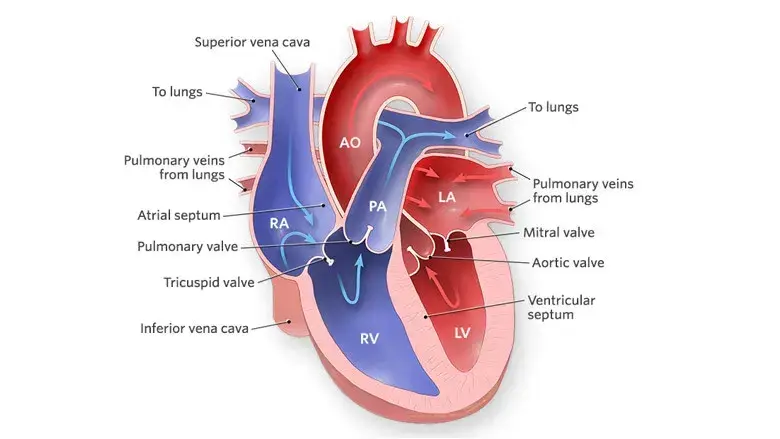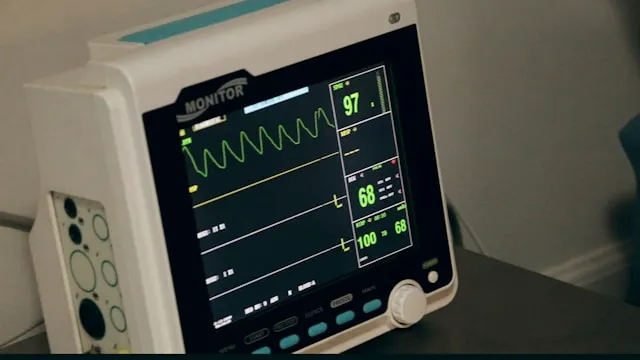The Heart: Anatomy

The heart is a muscle that pumps blood continuously to the rest of the body. It lies towards the front and middle of the chest, slightly to the left of the breastbone. The heart is divided into the right and left by a wall, and each side has a small chamber (atrium) that opens into a bigger pumping chamber (ventricle).
There are four chambers in the heart - the right chambers collect blood once its returns from the rest of the body and pumps it to the lungs, while the left chambers receive oxygen-rich blood from the lungs, which it pumps out again to the rest of the body. Valves guard each chamber to prevent backflow of blood into the previous chamber.
Heartbeat
The pumping action of the heart is measured in form of a heartbeat. Each heartbeat pushes blood forward in the arteries. There are two parts to each heartbeat - 'systole' when the heart contracts and pumps blood, and 'diastole' when the heart relaxes to allow refilling of chambers.
The heart rate or pulse is the number of times the heart beats per minute. A resting heart beats between 60 to 100 times a minute.
A child's heart rate is higher than that of adults. Heartbeat rises in responses to physical activity. The pulse can be felt at the following spots on the body:
- Wrists
- Side of neck
- Inside of elbow
- Top of foot
Heart's function and blood circulation
A network of blood vessels spread throughout the body in form of arteries, capillaries and veins carry the blood pumped by the heart to each organ and every cell in the body. Together, the heart and these blood vessels make up the circulatory system.
Arteries carry oxygen-rich blood away from the heart to the body. The 'aorta' is the largest artery in the body that emerges from the heart and branches off into smaller arteries (the first set of arteries that branch from aorta are called 'coronary arteries'; these supply the heart.) and capillaries to different organs. Deoxygenated blood from cells is picked up by a system of veins that carry it back to the heart.
Heart conditions
The major conditions that affect the heart are:
- High blood pressure
- Heart attack
- Coronary heart disease
- High cholesterol
- Deep vein thrombosis
- Palpitations
- Heart failure
- Atrial fibrillation
- Angina
- Familial hypercholesterolaemia
- Coronary artery spasm
- Cardiomyopathy
- Heart conditions in children (heart defects, heart murmur, failure, arrhythmia, endocarditis)
Amazing facts about the heart
- The system of blood vessels (arteries, capillaries and veins) is over 60,000 miles (or 96.5 km) long - enough to go around the world twice.
- The heart beats about 100,000 times in a single day and pumps over 7000 litres of blood each day, and over 2.5 billion times in a 70-year age span.
- An adult heart is about the size of two clenched fists, while that of a child is about one fist.
- Blood pumped by the heart takes about 20 seconds to circulate the entire vascular system.
Also, read about Vitamin D Rich Foods in India

Reviewed by







